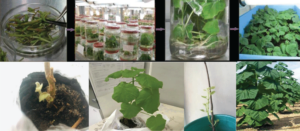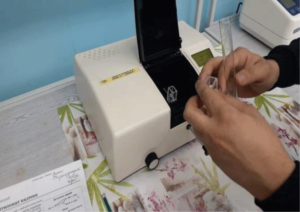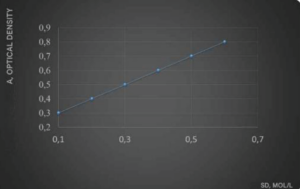Utilising Phytoremediation in Green Technologies: Exploring Natural Means of Environmental Clean-up
Introduction
Environmental pollution has emerged as a critical global challenge, affecting ecosystems, public health, and economic sustainability. Traditional methods of pollution control, while effective, often impose significant financial and ecological burdens. In this context, phytoremediation—a green technology using plants for environmental cleanup—presents a sustainable alternative. This blog explores the principles, applications, and potential of phytoremediation as an innovative solution to environmental degradation.
What Is Phytoremediation?
Phytoremediation is an eco-friendly method that leverages the natural capabilities of plants to absorb, accumulate, and detoxify pollutants from soil, water, and air. From heavy metals to organic toxins, plants serve as nature’s cleanup crew, restoring balance to contaminated environments. Learn more about the broader implications of this approach by reviewing recent studies here.
The Science Behind Phytoremediation
Key Mechanisms
- Rhizofiltration: Plant roots absorb and filter pollutants from water.
- Phytoextraction: Plants accumulate contaminants like heavy metals in their tissues, which can be harvested for safe disposal.
- Phytodegradation: Plants and their associated microorganisms break down organic pollutants into less harmful substances.
- Phytostabilization: Plants immobilize pollutants in the soil, preventing them from spreading.
- Phytovolatilization: Some plants release volatile compounds of contaminants into the atmosphere, reducing soil and water pollution.
Case Study: Paulownia Plant
Research highlighted the effectiveness of the Paulownia plant in phytoremediation, particularly in areas contaminated with cadmium, lead, arsenic, and antimony. Its fast growth rate and ability to thrive in polluted soils make it an ideal candidate for restoring degraded environments.
Applications of Phytoremediation
1. Soil Remediation
Phytoremediation is highly effective in treating soil contaminated with heavy metals and agricultural chemicals. Plants like hybrid willows and poplars demonstrate excellent absorption capabilities.
2. Water Purification
In aquatic environments, algae and certain water plants remove toxins, ensuring safer water resources. The process is particularly beneficial in wastewater treatment plants.
3. Air Quality Improvement
Urban areas plagued by industrial emissions benefit from phytoremediation, as plants reduce airborne pollutants and particulate matter.
Advantages of Phytoremediation
- Cost-Effectiveness: It is significantly cheaper than traditional methods.
- Sustainability: Phytoremediation preserves soil fertility and promotes biodiversity.
- Low Impact: Unlike chemical treatments, it doesn’t introduce secondary pollutants.
- Aesthetic Benefits: Green spaces created during the process enhance landscapes.
Challenges and Limitations
Despite its advantages, phytoremediation has limitations:
- Time-Intensive: The process can take years to achieve significant results.
- Plant Selection: Not all plants are suitable for every contaminant or environment.
- Disposal Issues: Contaminated plant biomass must be managed safely to prevent secondary pollution.
To address these challenges, researchers are exploring advancements in materials science to enhance the effectiveness of phytoremediation. Read more about the latest research in materials science for environmental applications.
Phytoremediation in Sustainable Development
Integrating phytoremediation into sustainable development strategies offers a dual benefit: environmental restoration and resource conservation. By adopting this green technology, we can mitigate the adverse effects of pollution while promoting economic growth.
This approach aligns with the goals of top materials science journals, which emphasize interdisciplinary solutions to pressing global challenges.
 Figure 1: Stages of Pavlovnia growth.
Figure 1: Stages of Pavlovnia growth.
The Role of Technology in Advancing Phytoremediation
Recent innovations are transforming how phytoremediation is implemented:
- AI-Driven Monitoring: Advanced algorithms analyze plant health and pollutant absorption in real time.
- Hybrid Solutions: Combining phytoremediation with nanotechnology enhances pollutant extraction.
- Genetic Engineering: Modifying plants to increase their absorption capabilities is a promising frontier.
Explore the intersection of AI and environmental science here.
Real-World Impact: Phytoremediation Success Stories
Kazakhstan’s Urban Cleanup
The Paulownia plant was successfully used in Almaty City to rehabilitate areas affected by industrial pollution. Over five years, researchers documented significant reductions in soil cadmium and lead levels.
European Initiatives
In Europe, energy willow plantations have been deployed to reclaim lands polluted by heavy metals, simultaneously producing bioenergy.

Figure 2: Study of solution samples.
 Figure 3: Effect of copper sulphate concentration on optical density.
Figure 3: Effect of copper sulphate concentration on optical density.
Conclusion
Phytoremediation represents a paradigm shift in how we approach environmental cleanup. By harnessing the power of plants, we can address pollution in a sustainable, cost-effective, and aesthetically pleasing manner. However, its success depends on ongoing research, technological integration, and public awareness.
